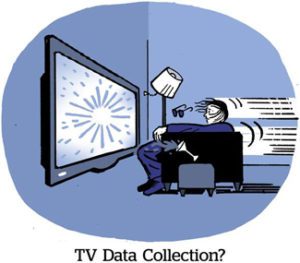 DISH Network is subscribing to the programmatic playbook, enabling greater automation and data application for buyers bidding on addressable TV spots.
DISH Network is subscribing to the programmatic playbook, enabling greater automation and data application for buyers bidding on addressable TV spots.
The satellite pay-TV provider, representing 8 million addressable households nationwide, on Monday debuted a programmatic marketplace and supply-side platform running on IPONWEB. Its initial demand partners are Rocket Fuel, TubeMogul and DataXu.
After an unspecified beta test period, DISH will open up the platform to more demand partners and trading desks.
DISH Media Sales, which is also responsible for monetizing DISH’s over-the-top service Sling TV, will oversee the development.
Although DISH’s addressable efforts date back to 2008 when it became one of the first pay-TV providers to deliver ads targeted to the household level (via INVIDI, ad tech for cable and satellite TV providers), DISH now claims it can target impressions in real time.
“We wanted to take our household addressable product and grow it within the digital ecosystem,” Adam Gaynor, VP of DISH Media Sales, told AdExchanger. “Programmatic adds a new level of automation and lets us speak in a language the digital world is comfortable with.”
DISH built its SSP using IPONWEB since it wanted flexibility when managing yield. Although IPONWEB’s tech backbone provided real-time bidding capabilities à la the new marketplace, it serves a dual purpose for agency clients like GroupM’s Modi Media who might wish to construct a private exchange for brand clients.
DISH’s addressable sales efforts are mostly direct sold, said Gaynor. Brands share their target audiences and DISH matches impressions accordingly.
Both DISH’s addressable inventory, reserved upfront, and its programmatic impressions, optimized in real time, come from the same pool, Gaynor said.
“It’s not like we’ll let ‘traditional’ addressable go first and then programmatic second,” he explained. “Our new system will play out impressions as they are needed in terms of reach and frequency, or depending on the control mechanisms the advertisers set.”
Programmatic Addressable, From The Buyer’s Perspective
Digital buyers often decry the lack of real-time optimization or buying in programmatic TV.
“What makes DISH’s new offering special is it is automating linear addressable across 210 DMAs,” said Lindsay Fordham, director of product marketing for Rocket Fuel. “It’s real-time bidding in the sense that we have the opportunity to bid on specific households and select when we want to deliver for those households.”
“Real time,” in this instance, means buyers are notified of a winning bid in under 100 milliseconds. But while the system is enabling real-time targeting and bidding, Fordham said the next question is, “How can we more quickly schedule and automate the delivery of ads to the household?”
Oscar Rondon, senior director of TV strategy and partnerships for TubeMogul, seemed encouraged by the promise of DISH’s programmatic marketplace. “You could win an auction early one day and your ad would be airing within a few hours or later that night,” he said.
Still, addressable TV buys require a certain threshold of households be met in order to execute delivery, he said. In other words, there is a finite amount of inventory and an audience target may be quite narrow and, thus, more expensive to reach.
“The whole premise of addressable is you’re targeting an ad to a household that meets all of your criteria,” Rondon said. “There are still issues to resolve, but generally you have a more qualified audience and there’s less waste because you’re not just buying highly indexed network/daypart combinations.”
Household addressable buys allow for precise targeting. DISH offers 80 segments per impression based on household demographic and viewership data, with measurement and verification via Rentrak.
The opportunity in addressable is to move beyond age and gender to target households who, for example, have a propensity to watch sports or who own an SUV using third-party data sets from providers like Experian and Acxiom.
DISH also wanted to facilitate data matching between its network, its current and future demand-side platform partners and advertiser/agency clients.
Using a data onboarder, the DSP could match an advertiser’s first-party data with DISH’s subscriber/household list to identify households that match its desired attributes.
“We receive anonymized requests tied to a hashed household ID with DISH, where there’s no PII exchange,” Fordham explained. “Over time, we can see how households are engaging with spots throughout the week and make decisions on how to value those households as we optimize more bids based on demo/viewership trends.”
Like online video, DISH would release data about a household and a buyer would bid based on its media plan. DISH’s SSP would then approve or reject.
Rondon noted creative has to be pre-approved for quality control purposes, so those assets are sent over to IPONWEB in advance. Once an auction is won, the ad creative can be served.
“For us, it’s interesting because we can now offer this unique access to addressable homes,” Rondon said. “DISH will ultimately have to figure out how they monetize audiences across all devices – whether that’s Sling or OTT – and eventually sell a portfolio of video across all screens. That’s … the future – creating this package of linear, addressable, OTT, mobile with common measurement across.”
















